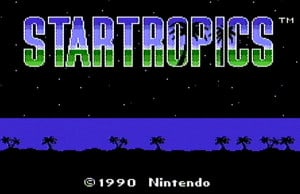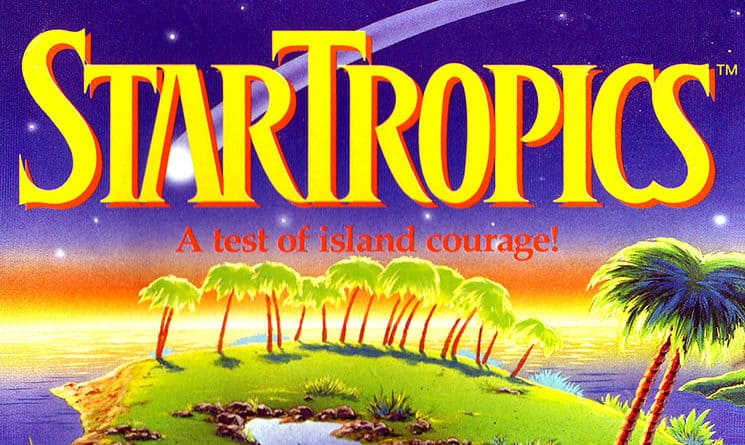“StarTropics”
(Nintendo, 1990)
When people ask me what my favorite video game is, I usually don’t hesitate: “Kid Icarus.” There you go. Easy as that. Most have heard of “Icarus” either from playing it when it was released or because protagonist Pit was part of the “Smash Bros.” franchise. It’s an easy, relatable, un-debatable answer. “Kid Icarus” is, without a doubt, one of my absolute favorite games. But my favorite game? My number one? I have a confession to make. My name is Zach and my favorite video game of all time is “StarTropics.”
“StarTropics” is an outlier in the NES catalog. Unlike most video games of the era, it wasn’t created in Japan and modified for a Western audience. The game — the story of teenager Mike Jones and his quest to rescue his Uncle Steve from aliens — was never even released in Japan. It’s unique humor, however, is unmistakably Japanese. The credit for that belongs to Genyo Takeda.
An Osaka native, Takeda was living in the U.S. when he wrote and directed “StarTropics.” Hired by Nintendo in 1971, Takeda had been a part of the team responsible for two huge arcade hits — 1982’s “Popeye” and 1984’s “Punch-Out!!” — which saw further fame once ported over to home consoles.
By the start of the 1990s, most of Takeda’s co-workers were focused on the production and release of the upcoming Super Nintendo console. Takeda, instead, was focused on cherry-picking from the best of Nintendo’s then current line-up to create one of the most complete, challenging, and satisfying games made for any console.

Borrow Simon’s whip from “Castlevania” and turn it into a lethal yo-yo. Take the top-down dungeon view from “The Legend of Zelda” and transport it to a chain of islands. Take the mystery solving aspects of RPGs like “Final Fantasy” and attach them to riddles that rely on knowledge of the musical scale and the courage to submerge the instruction book in water. That’s “StarTropics.”
Yes, the game requires you to destroy part of its packaging. Maybe you’ve heard of the infamous end of the game’s fourth chapter. A message from Uncle Steve — “Tell Mike to dip my letter in water.” — was a literal instruction. Players had to dip in water an “authentic” letter that was included with the game packaging in order to get a major clue. Relying on real world interaction to continue to the next level of a game was unprecedented, and caused a lot of frustration when renting copies of the game that often didn’t come with original packaging.
Narrow, must-be-perfect jumps; must-be-memorized labyrinths; a catchy soundtrack (courtesy of Takashi Kumegawa), and nuanced graphics added up to a masterpiece. Throw in well-designed allies and enemies, bizarre — but funny — humor and challenging, but not impossible gameplay, and you have an unassailable classic.
“StarTropics” received one sequel: 1994’s “Zoda’s Revenge,” the NES’ penultimate title. It’s just as good as the original. Takeda was instrumental in developing the Wii console, but his crowning achievement remains unfairly obscure, never updated, rebooted or revisited with newer technology. “StarTropics” demands your full attention. It’s the least you can do for the best video game ever made.
Hidden Gem or Total Junk:
The shiniest of all Hidden Gems

